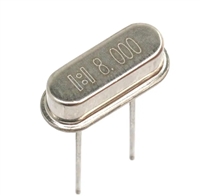ADSP-21371
UART Port
2-Wire Interface Port (TWI)
The ADSP-21371 processor provides a full-duplex Universal
Asynchronous Receiver/Transmitter (UART) port, which is
fully compatible with PC-standard UARTs. The UART port
provides a simplified UART interface to other peripherals or
hosts, supporting full-duplex, DMA-supported, asynchronous
transfers of serial data. The UART also has multiprocessor com-
munication capability using 9-bit address detection. This allows
it to be used in multidrop networks through the RS-485 data
interface standard. The UART port also includes support for 5
to 8 data bits, 1 or 2 stop bits, and none, even, or odd parity. The
UART port supports two modes of operation:
The TWI is a bidirectional 2-wire, serial bus used to move 8-bit
data while maintaining compliance with the I2C bus protocol.
The TWI master incorporates the following features:
• 7-bit addressing
• Simultaneous master and slave operation on multiple
device systems with support for multi master data
arbitration
• Digital filtering and timed event processing
• 100 kbps and 400 kbps data rates
• Low interrupt rate
• PIO (programmed I/O) – The processor sends or receives
data by writing or reading I/O-mapped UART registers.
The data is double-buffered on both transmit and receive.
Pulse-Width Modulation
The PWM module is a flexible, programmable, PWM waveform
generator that can be programmed to generate the required
switching patterns for various applications related to motor and
engine control or audio power control. The PWM generator can
generate either center-aligned or edge-aligned PWM wave-
forms. In addition, it can generate complementary signals on
two outputs in paired mode or independent signals in non-
paired mode (applicable to a single group of four PWM
waveforms).
• DMA (direct memory access) – The DMA controller trans-
fers both transmit and receive data. This reduces the
number and frequency of interrupts required to transfer
data to and from memory. The UART has two dedicated
DMA channels, one for transmit and one for receive. These
DMA channels have lower default priority than most DMA
channels because of their relatively low service rates.
The UART port's baud rate, serial data format, error code gen-
eration and status, and interrupts are programmable:
The entire PWM module has four groups of four PWM outputs
each. Therefore, this module generates 16 PWM outputs in
total. Each PWM group produces two pairs of PWM signals on
the four PWM outputs.
• Supporting bit rates ranging from (fPCLK/ 1,048,576) to
(fPCLK/16) bits per second.
• Supporting data formats from 7 to 12 bits per frame.
The PWM generator is capable of operating in two distinct
modes while generating center-aligned PWM waveforms: single
update mode or double update mode. In single update mode the
duty cycle values are programmable only once per PWM period.
This results in PWM patterns that are symmetrical about the
mid-point of the PWM period. In double update mode, a sec-
ond updating of the PWM registers is implemented at the mid-
point of the PWM period. In this mode, it is possible to produce
asymmetrical PWM patterns that produce lower harmonic dis-
tortion in three-phase PWM inverters.
• Both transmit and receive operations can be configured to
generate maskable interrupts to the processor.
In conjunction with the general-purpose timer functions, auto-
baud detection is supported.
Timers
The ADSP-21371 has a total of three timers: a core timer that
can generate periodic software interrupts and two general pur-
pose timers that can generate periodic interrupts and be
independently set to operate in one of three modes:
ROM Based Security
• Pulse waveform generation mode
• Pulse width count/capture mode
• External event watchdog mode
The ADSP-21371 has a ROM security feature that provides
hardware support for securing user software code by preventing
unauthorized reading from the internal code when enabled.
When using this feature, the processor does not boot-load any
external code, executing exclusively from internal SRAM/ROM.
Additionally, the processor is not freely accessible via the JTAG
port. Instead, a unique 64-bit key, which must be scanned in
through the JTAG or Test Access Port will be assigned to each
customer. The device will ignore a wrong key. Emulation fea-
tures and external boot modes are only available after the
correct key is scanned.
The core timer can be configured to use FLAG3 as a timer
expired signal, and each general-purpose timer has one bidirec-
tional pin and four registers that implement its mode of
operation: a 6-bit configuration register, a 32-bit count register,
a 32-bit period register, and a 32-bit pulse width register. A sin-
gle control and status register enables or disables both general-
purpose timers independently.
Rev. 0
|
Page 9 of 48
|
June 2007






 资料手册解读:UC3842参数和管脚说明
资料手册解读:UC3842参数和管脚说明

 一文带你了解无源晶振的负载电容为何要加两颗谐振电容CL1和CL2
一文带你了解无源晶振的负载电容为何要加两颗谐振电容CL1和CL2

 玻璃管保险丝与陶瓷管保险丝:区别与替代性探讨
玻璃管保险丝与陶瓷管保险丝:区别与替代性探讨

 PCF8574资料解读:主要参数分析、引脚说明
PCF8574资料解读:主要参数分析、引脚说明
